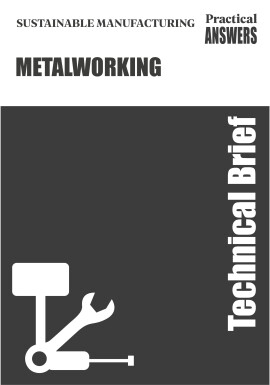
Appropriate Paper-based Technology (APT)
A manual
Appropriate Paper-based Technology (APT) is a comprehensive survey of the technologies for making a wide range of products from chess-men to armchairs, from trays to solar cookers, using paper. It is a revised and updated edition of the Manual of APT published by IRED, Harare, 1989 and 1991. The revised edition includes additional models and extra pages of colour photographs, and special supplements on APT in the service of disabled people.
Published: 1995
Pages: 168
eBook: 9781780441658
Paperback: 9781853392689
| ACKNOWLEDGEMENTS vi | |||
|---|---|---|---|
| 1. Introduction 1 | |||
| 2. Factors affecting strength and thermally-induced stresses 2 | |||
| 3. The tendency of stoves and stove liners to fail from thermally-induced stresses 4 | |||
| 4. The effect of the clay/non-clay ratio on stove behaviour 5 | |||
| Dying shrinkage and strength after firing 5 | |||
| Effective porosity, strength and thermally-induced stresses 5 | |||
| The anisotropy of shrinkage and residual stress development 6 | |||
| 5. Avoidance of thermally-induced stress failure 8 | |||
| 6. Selection and preparation of clay bodies for stove manufacture 10 | |||
| Determination of clay/non-clay ratio in natural clay body 10 | |||
| Theoretical background on separation of the clay fraction below 2um 11 | |||
| Test procedure 12 | |||
| Adjustment of clay body 14 | |||
| 7. Testing the effects of adjusting the clay/non-clay ratio 15 | |||
| APPENDIX | |||
| Equipment and facilities 17 |
Bevill Packer
Bevill Packer, whilst a sociology lecturer at the United College of Education, Bulawayo, tried and tested appropriate paper based techniques in the 1980s
Occupational Therapy in Psychiatry and Mental Health
Clinical Reasoning in Psychiatric Occupational Therapy
Alers, Vivyan
2014
https://doi.org/10.1002/9781118913536.ch5 [Citations: 0]Feeding difficulties in children with cerebral palsy: low‐cost caregiver training in Dhaka, Bangladesh
Adams, M. S.
Khan, N. Z.
Begum, S. A.
Wirz, S. L.
Hesketh, T.
Pring, T. R.
Child: Care, Health and Development, Vol. 38 (2012), Iss. 6 P.878
https://doi.org/10.1111/j.1365-2214.2011.01327.x [Citations: 70]The efficacy of appropriate paper-based technology for Kenyan children with cerebral palsy
Barton, Catherine
Buckley, John
Samia, Pauline
Williams, Fiona
Taylor, Suzan R.
Lindoewood, Rachel
Disability and Rehabilitation: Assistive Technology, Vol. 17 (2022), Iss. 8 P.927
https://doi.org/10.1080/17483107.2020.1830442 [Citations: 12]The Children's Rehabilitation Unit: A Team Approach to Family-based Rehabilitation in Zimbabwe
Cortes, Dolores
World Federation of Occupational Therapists Bulletin, Vol. 21 (1990), Iss. 1 P.10
https://doi.org/10.1080/14473828.1990.11785202 [Citations: 0]Thinking outside the cardboard box: insights from a course to train rural Kenyans to make postural support devices from appropriate paper-based technology (APT) for children with cerebral palsy
Lindoewood, Rachel
Bracegirdle, Ceri
Samia, Pauline
Westmacott, Jean
Lindoewood, Paul
Disability and Rehabilitation: Assistive Technology, Vol. 15 (2020), Iss. 8 P.952
https://doi.org/10.1080/17483107.2019.1629653 [Citations: 0]




